Pengyu Chen
Pushing the Limits of Safety: A Technical Report on the ATLAS Challenge 2025
Jun 14, 2025Abstract:Multimodal Large Language Models (MLLMs) have enabled transformative advancements across diverse applications but remain susceptible to safety threats, especially jailbreak attacks that induce harmful outputs. To systematically evaluate and improve their safety, we organized the Adversarial Testing & Large-model Alignment Safety Grand Challenge (ATLAS) 2025}. This technical report presents findings from the competition, which involved 86 teams testing MLLM vulnerabilities via adversarial image-text attacks in two phases: white-box and black-box evaluations. The competition results highlight ongoing challenges in securing MLLMs and provide valuable guidance for developing stronger defense mechanisms. The challenge establishes new benchmarks for MLLM safety evaluation and lays groundwork for advancing safer multimodal AI systems. The code and data for this challenge are openly available at https://github.com/NY1024/ATLAS_Challenge_2025.
TextFlux: An OCR-Free DiT Model for High-Fidelity Multilingual Scene Text Synthesis
May 23, 2025Abstract:Diffusion-based scene text synthesis has progressed rapidly, yet existing methods commonly rely on additional visual conditioning modules and require large-scale annotated data to support multilingual generation. In this work, we revisit the necessity of complex auxiliary modules and further explore an approach that simultaneously ensures glyph accuracy and achieves high-fidelity scene integration, by leveraging diffusion models' inherent capabilities for contextual reasoning. To this end, we introduce TextFlux, a DiT-based framework that enables multilingual scene text synthesis. The advantages of TextFlux can be summarized as follows: (1) OCR-free model architecture. TextFlux eliminates the need for OCR encoders (additional visual conditioning modules) that are specifically used to extract visual text-related features. (2) Strong multilingual scalability. TextFlux is effective in low-resource multilingual settings, and achieves strong performance in newly added languages with fewer than 1,000 samples. (3) Streamlined training setup. TextFlux is trained with only 1% of the training data required by competing methods. (4) Controllable multi-line text generation. TextFlux offers flexible multi-line synthesis with precise line-level control, outperforming methods restricted to single-line or rigid layouts. Extensive experiments and visualizations demonstrate that TextFlux outperforms previous methods in both qualitative and quantitative evaluations.
Intelligent Bear Prevention System Based on Computer Vision: An Approach to Reduce Human-Bear Conflicts in the Tibetan Plateau Area, China
Mar 29, 2025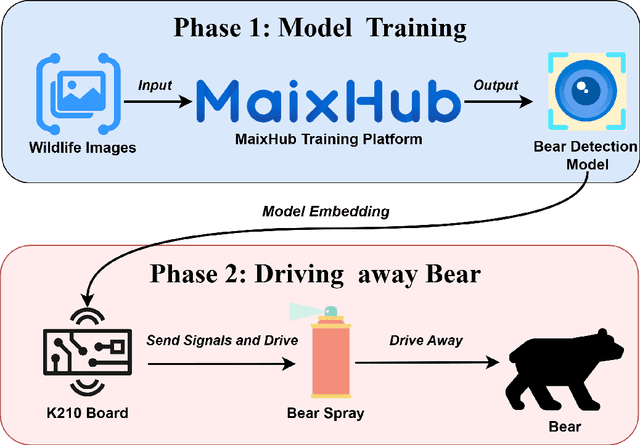
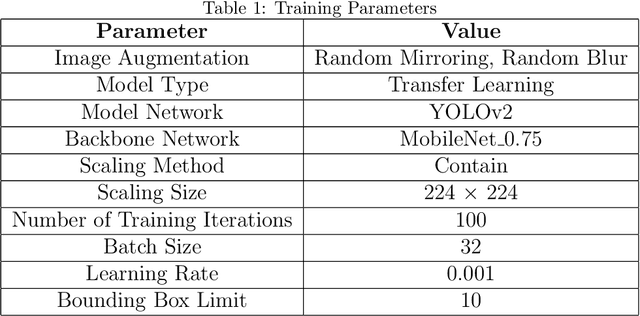
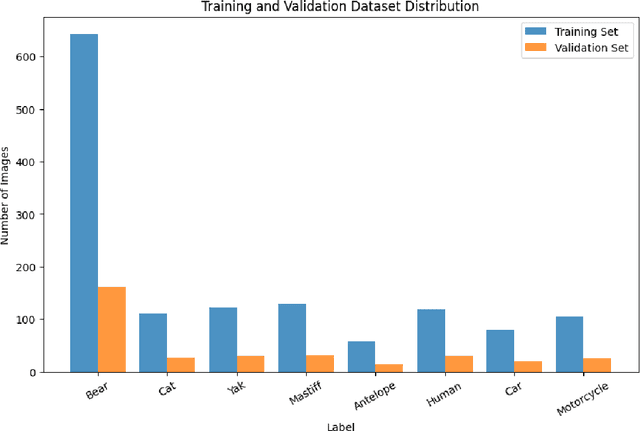

Abstract:Conflicts between humans and bears on the Tibetan Plateau present substantial threats to local communities and hinder wildlife preservation initiatives. This research introduces a novel strategy that incorporates computer vision alongside Internet of Things (IoT) technologies to alleviate these issues. Tailored specifically for the harsh environment of the Tibetan Plateau, the approach utilizes the K210 development board paired with the YOLO object detection framework along with a tailored bear-deterrent mechanism, offering minimal energy usage and real-time efficiency in bear identification and deterrence. The model's performance was evaluated experimentally, achieving a mean Average Precision (mAP) of 91.4%, demonstrating excellent precision and dependability. By integrating energy-efficient components, the proposed system effectively surpasses the challenges of remote and off-grid environments, ensuring uninterrupted operation in secluded locations. This study provides a viable, eco-friendly, and expandable solution to mitigate human-bear conflicts, thereby improving human safety and promoting bear conservation in isolated areas like Yushu, China.
A GAN-Enhanced Deep Learning Framework for Rooftop Detection from Historical Aerial Imagery
Mar 29, 2025Abstract:Accurate rooftop detection from historical aerial imagery is vital for examining long-term urban development and human settlement patterns. However, black-and-white analog photographs pose significant challenges for modern object detection frameworks due to their limited spatial resolution, lack of color information, and archival degradation. To address these limitations, this study introduces a two-stage image enhancement pipeline based on Generative Adversarial Networks (GANs): image colorization using DeOldify, followed by super-resolution enhancement with Real-ESRGAN. The enhanced images were then used to train and evaluate rooftop detection models, including Faster R-CNN, DETReg, and YOLOv11n. Results show that combining colorization with super-resolution substantially improves detection performance, with YOLOv11n achieving a mean Average Precision (mAP) exceeding 85%. This reflects an improvement of approximately 40% over original black-and-white images and 20% over images enhanced through colorization alone. The proposed method effectively bridges the gap between archival imagery and contemporary deep learning techniques, enabling more reliable extraction of building footprints from historical aerial photographs.
InterSliceBoost: Identifying Tissue Layers in Three-dimensional Ultrasound Images for Chronic Lower Back Pain (cLBP) Assessment
Mar 25, 2025Abstract:Available studies on chronic lower back pain (cLBP) typically focus on one or a few specific tissues rather than conducting a comprehensive layer-by-layer analysis. Since three-dimensional (3-D) images often contain hundreds of slices, manual annotation of these anatomical structures is both time-consuming and error-prone. We aim to develop and validate a novel approach called InterSliceBoost to enable the training of a segmentation model on a partially annotated dataset without compromising segmentation performance. The architecture of InterSliceBoost includes two components: an inter-slice generator and a segmentation model. The generator utilizes residual block-based encoders to extract features from adjacent image-mask pairs (IMPs). Differential features are calculated and input into a decoder to generate inter-slice IMPs. The segmentation model is trained on partially annotated datasets (e.g., skipping 1, 2, 3, or 7 images) and the generated inter-slice IMPs. To validate the performance of InterSliceBoost, we utilized a dataset of 76 B-mode ultrasound scans acquired on 29 subjects enrolled in an ongoing cLBP study. InterSliceBoost, trained on only 33% of the image slices, achieved a mean Dice coefficient of 80.84% across all six layers on the independent test set, with Dice coefficients of 73.48%, 61.11%, 81.87%, 95.74%, 83.52% and 88.74% for segmenting dermis, superficial fat, superficial fascial membrane, deep fat, deep fascial membrane, and muscle. This performance is significantly higher than the conventional model trained on fully annotated images (p<0.05). InterSliceBoost can effectively segment the six tissue layers depicted on 3-D B-model ultrasound images in settings with partial annotations.
Embedding-based Approaches to Hyperpartisan News Detection
Jan 02, 2025


Abstract:In this paper, we describe our systems in which the objective is to determine whether a given news article could be considered as hyperpartisan. Hyperpartisan news is news that takes an extremely polarized political standpoint with an intention of creating political divide among the public. We attempted several approaches, including n-grams, sentiment analysis, as well as sentence and document representation using pre-tained ELMo. Our best system using pre-trained ELMo with Bidirectional LSTM achieved an accuracy of 83% through 10-fold cross-validation without much hyperparameter tuning.
GDSG: Graph Diffusion-based Solution Generator for Optimization Problems in MEC Networks
Dec 15, 2024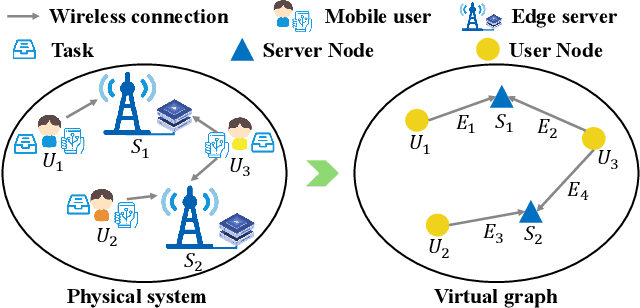
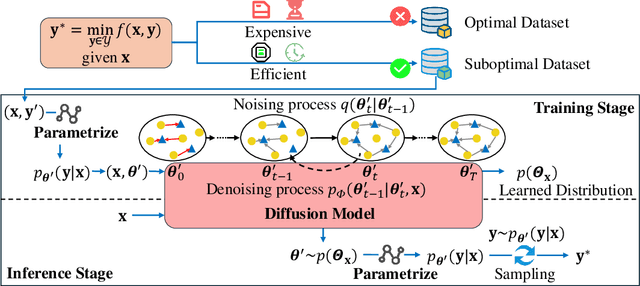

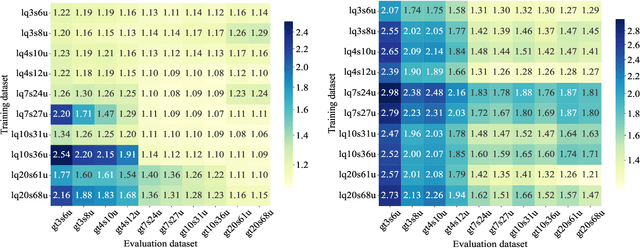
Abstract:Optimization is crucial for MEC networks to function efficiently and reliably, most of which are NP-hard and lack efficient approximation algorithms. This leads to a paucity of optimal solution, constraining the effectiveness of conventional deep learning approaches. Most existing learning-based methods necessitate extensive optimal data and fail to exploit the potential benefits of suboptimal data that can be obtained with greater efficiency and effectiveness. Taking the multi-server multi-user computation offloading (MSCO) problem, which is widely observed in systems like Internet-of-Vehicles (IoV) and Unmanned Aerial Vehicle (UAV) networks, as a concrete scenario, we present a Graph Diffusion-based Solution Generation (GDSG) method. This approach is designed to work with suboptimal datasets while converging to the optimal solution large probably. We transform the optimization issue into distribution-learning and offer a clear explanation of learning from suboptimal training datasets. We build GDSG as a multi-task diffusion model utilizing a Graph Neural Network (GNN) to acquire the distribution of high-quality solutions. We use a simple and efficient heuristic approach to obtain a sufficient amount of training data composed entirely of suboptimal solutions. In our implementation, we enhance the backbone GNN and achieve improved generalization. GDSG also reaches nearly 100\% task orthogonality, ensuring no interference between the discrete and continuous generation tasks. We further reveal that this orthogonality arises from the diffusion-related training loss, rather than the neural network architecture itself. The experiments demonstrate that GDSG surpasses other benchmark methods on both the optimal and suboptimal training datasets. The MSCO datasets has open-sourced at http://ieee-dataport.org/13824, as well as the GDSG algorithm codes at https://github.com/qiyu3816/GDSG.
GDSG: Graph Diffusion-based Solution Generation for Optimization Problems in MEC Networks
Dec 11, 2024



Abstract:Optimization is crucial for MEC networks to function efficiently and reliably, most of which are NP-hard and lack efficient approximation algorithms. This leads to a paucity of optimal solution, constraining the effectiveness of conventional deep learning approaches. Most existing learning-based methods necessitate extensive optimal data and fail to exploit the potential benefits of suboptimal data that can be obtained with greater efficiency and effectiveness. Taking the multi-server multi-user computation offloading (MSCO) problem, which is widely observed in systems like Internet-of-Vehicles (IoV) and Unmanned Aerial Vehicle (UAV) networks, as a concrete scenario, we present a Graph Diffusion-based Solution Generation (GDSG) method. This approach is designed to work with suboptimal datasets while converging to the optimal solution large probably. We transform the optimization issue into distribution-learning and offer a clear explanation of learning from suboptimal training datasets. We build GDSG as a multi-task diffusion model utilizing a Graph Neural Network (GNN) to acquire the distribution of high-quality solutions. We use a simple and efficient heuristic approach to obtain a sufficient amount of training data composed entirely of suboptimal solutions. In our implementation, we enhance the backbone GNN and achieve improved generalization. GDSG also reaches nearly 100\% task orthogonality, ensuring no interference between the discrete and continuous generation tasks. We further reveal that this orthogonality arises from the diffusion-related training loss, rather than the neural network architecture itself. The experiments demonstrate that GDSG surpasses other benchmark methods on both the optimal and suboptimal training datasets. The MSCO datasets has open-sourced at http://ieee-dataport.org/13824, as well as the GDSG algorithm codes at https://github.com/qiyu3816/GDSG.
Diffusion Models as Network Optimizers: Explorations and Analysis
Nov 04, 2024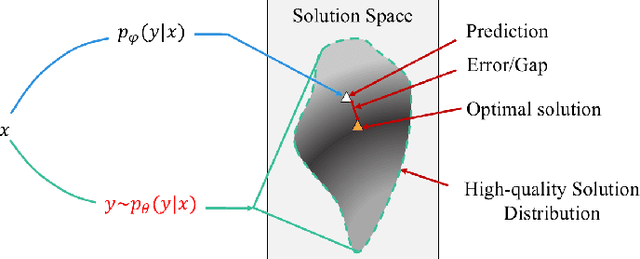
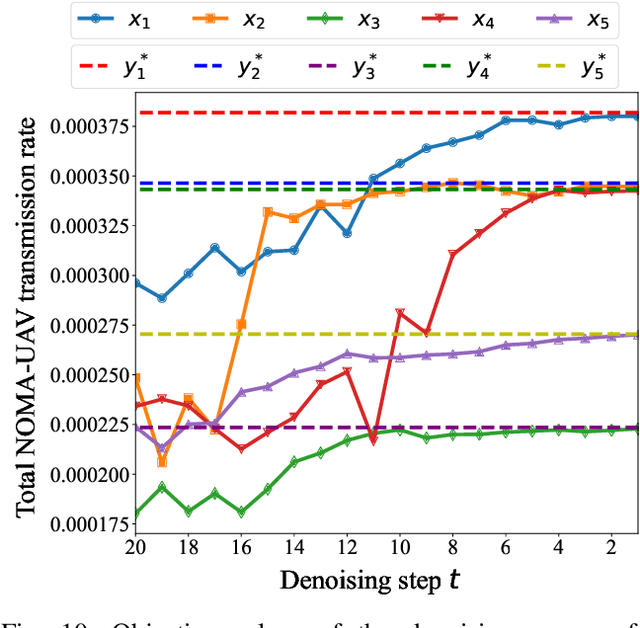
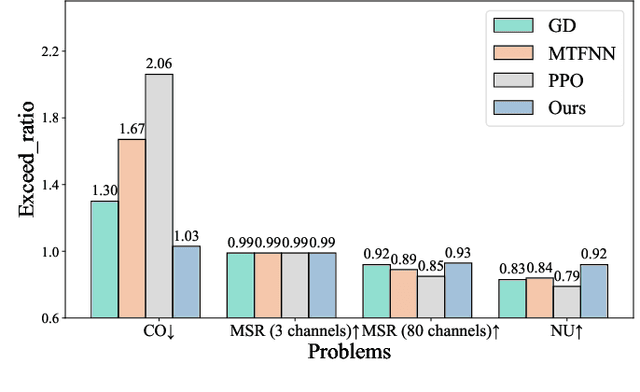
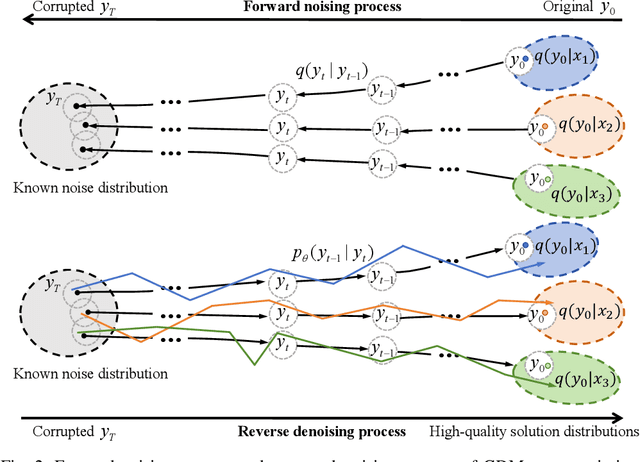
Abstract:Network optimization is a fundamental challenge in the Internet of Things (IoT) network, often characterized by complex features that make it difficult to solve these problems. Recently, generative diffusion models (GDMs) have emerged as a promising new approach to network optimization, with the potential to directly address these optimization problems. However, the application of GDMs in this field is still in its early stages, and there is a noticeable lack of theoretical research and empirical findings. In this study, we first explore the intrinsic characteristics of generative models. Next, we provide a concise theoretical proof and intuitive demonstration of the advantages of generative models over discriminative models in network optimization. Based on this exploration, we implement GDMs as optimizers aimed at learning high-quality solution distributions for given inputs, sampling from these distributions during inference to approximate or achieve optimal solutions. Specifically, we utilize denoising diffusion probabilistic models (DDPMs) and employ a classifier-free guidance mechanism to manage conditional guidance based on input parameters. We conduct extensive experiments across three challenging network optimization problems. By investigating various model configurations and the principles of GDMs as optimizers, we demonstrate the ability to overcome prediction errors and validate the convergence of generated solutions to optimal solutions.We provide code and data at https://github.com/qiyu3816/DiffSG.
A Novel Aerial-Aquatic Locomotion Robot with Variable Stiffness Propulsion Module
Sep 15, 2024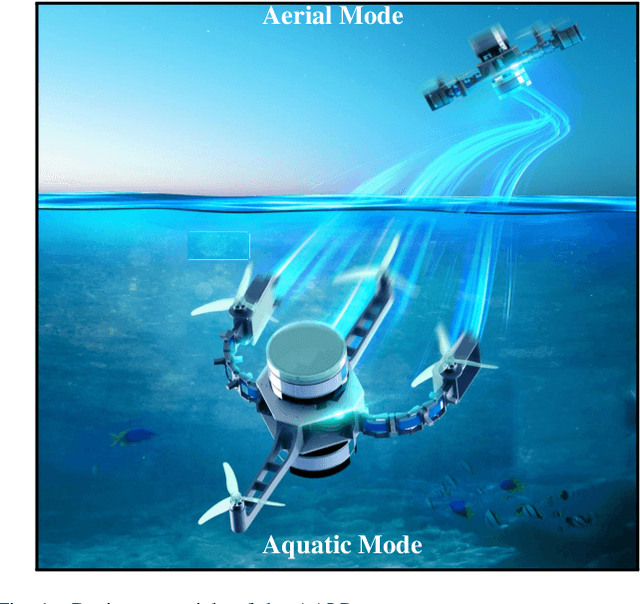
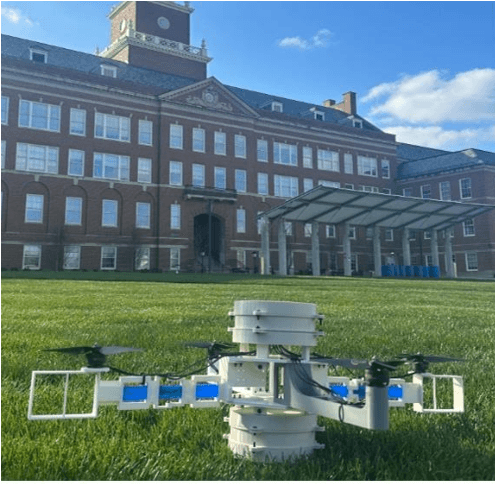
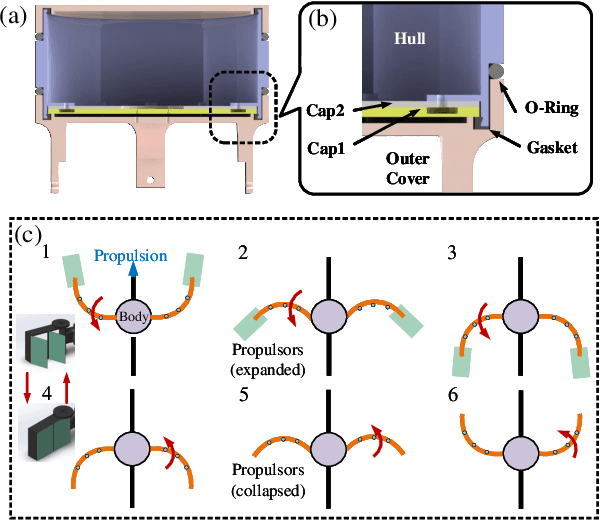
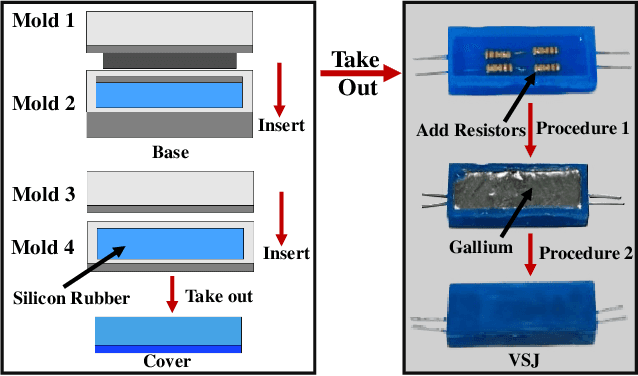
Abstract:In recent years, the development of robots capable of operating in both aerial and aquatic environments has gained significant attention. This study presents the design and fabrication of a novel aerial-aquatic locomotion robot (AALR). Inspired by the diving beetle, the AALR incorporates a biomimetic propulsion mechanism with power and recovery strokes. The variable stiffness propulsion module (VSPM) uses low melting point alloy (LMPA) and variable stiffness joints (VSJ) to achieve efficient aquatic locomotion while reduce harm to marine life. The AALR's innovative design integrates the VSPM into the arms of a traditional quadrotor, allowing for effective aerial-aquatic locomotion. The VSPM adjusts joint stiffness through temperature control, meeting locomotion requirements in both aerial and aquatic modes. A dynamic model for the VSPM was developed, with optimized dimensional parameters to increase propulsion force. Experiments focused on aquatic mode analysis and demonstrated the AALR's swimming capability, achieving a maximum swimming speed of 77 mm/s underwater. The results confirm the AALR's effective performance in water environment, highlighting its potential for versatile, eco-friendly operations.
 Add to Chrome
Add to Chrome Add to Firefox
Add to Firefox Add to Edge
Add to Edge